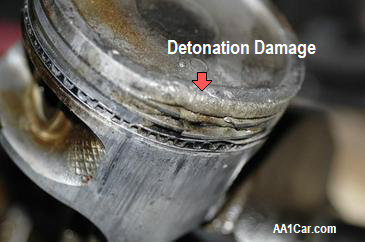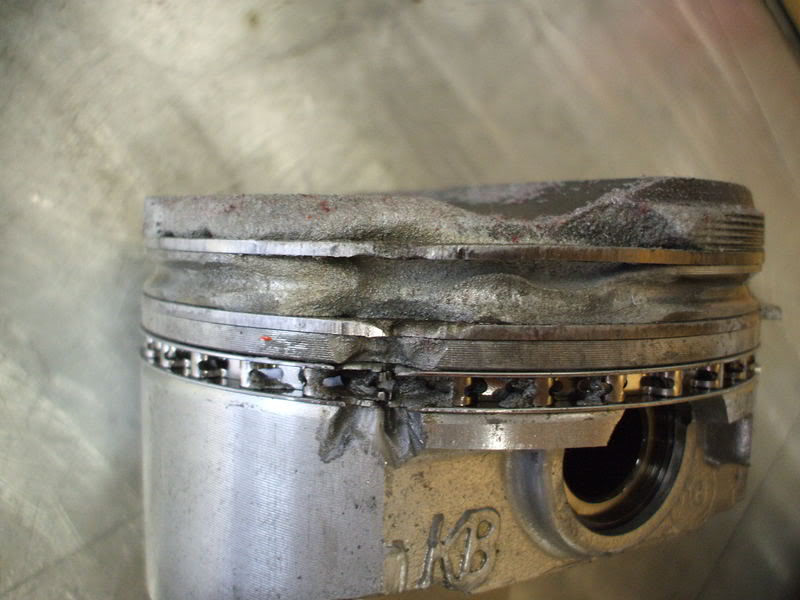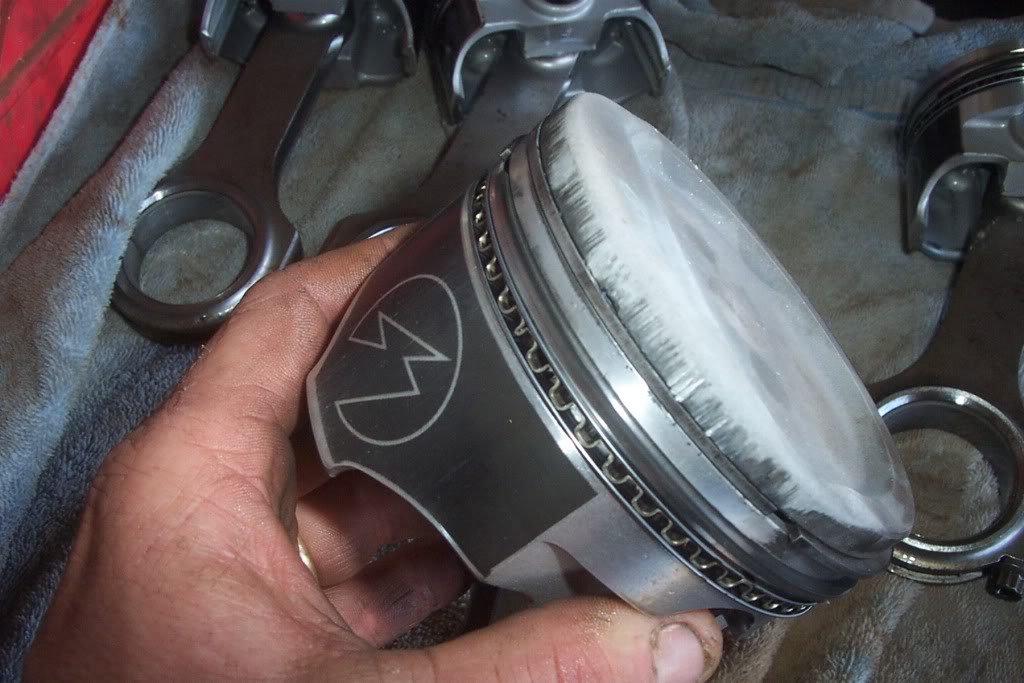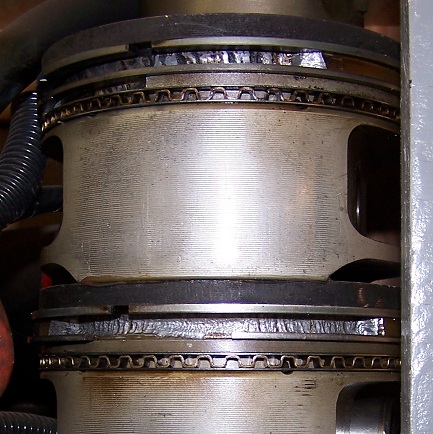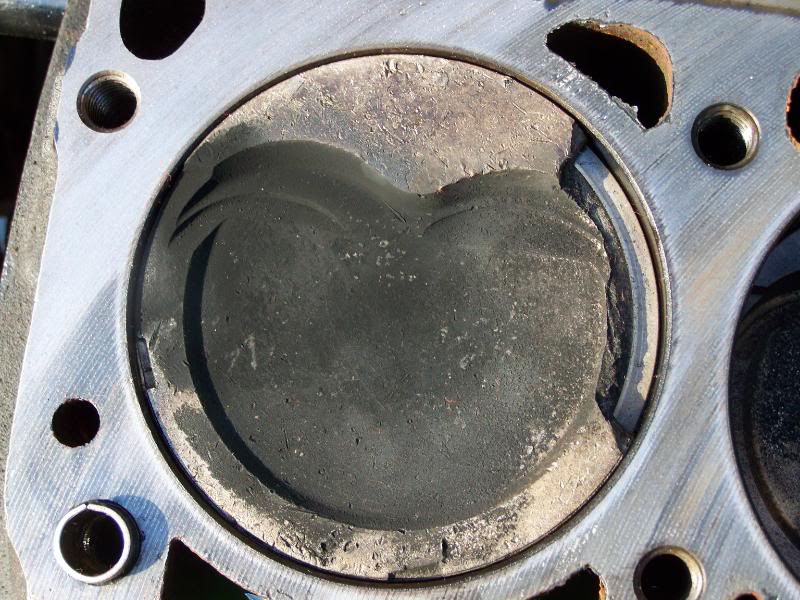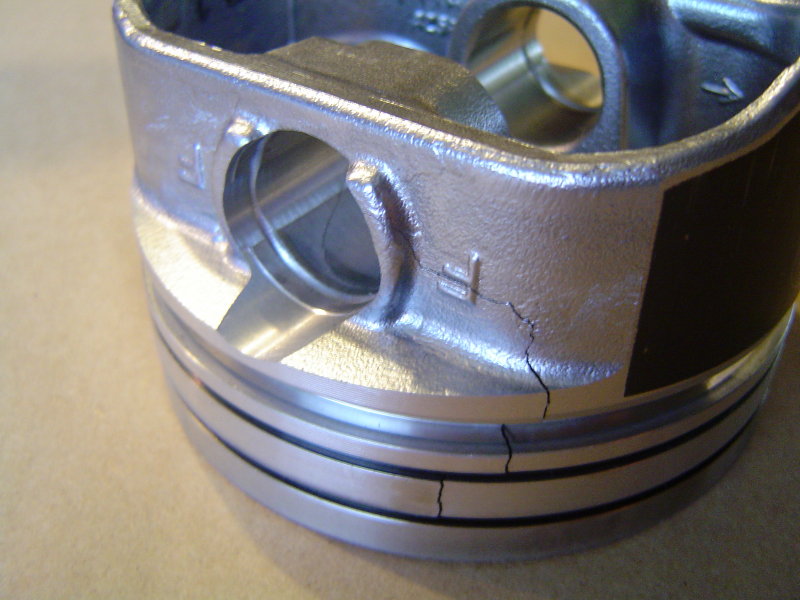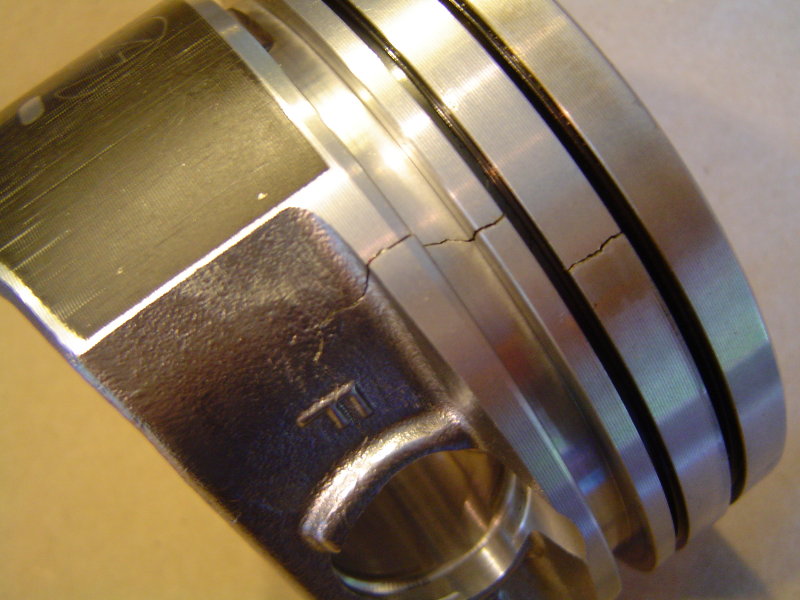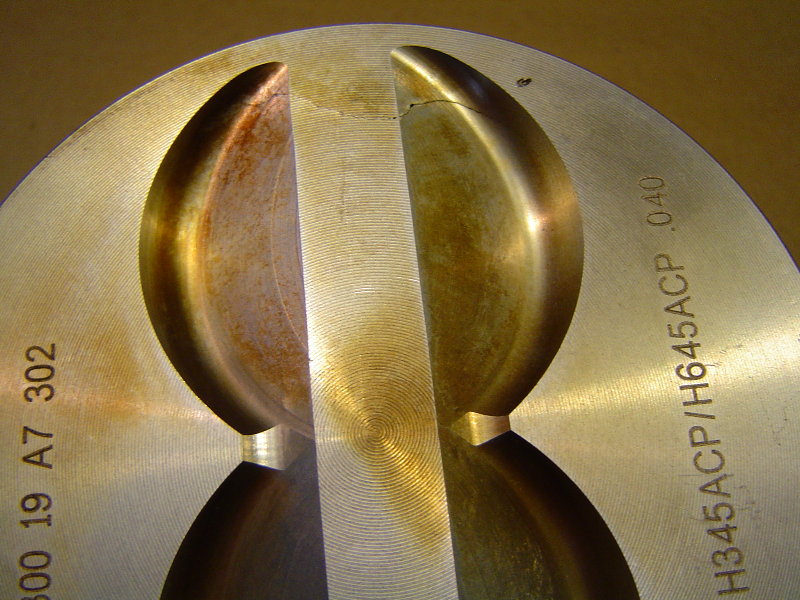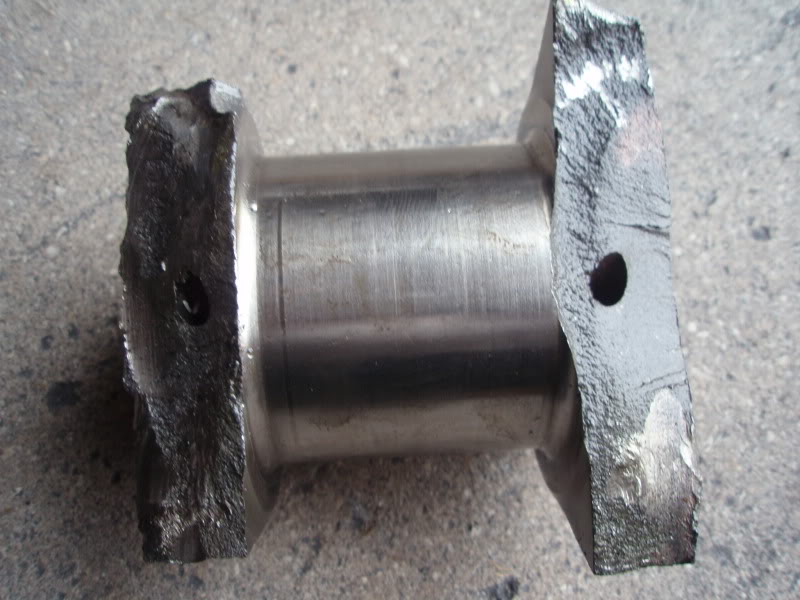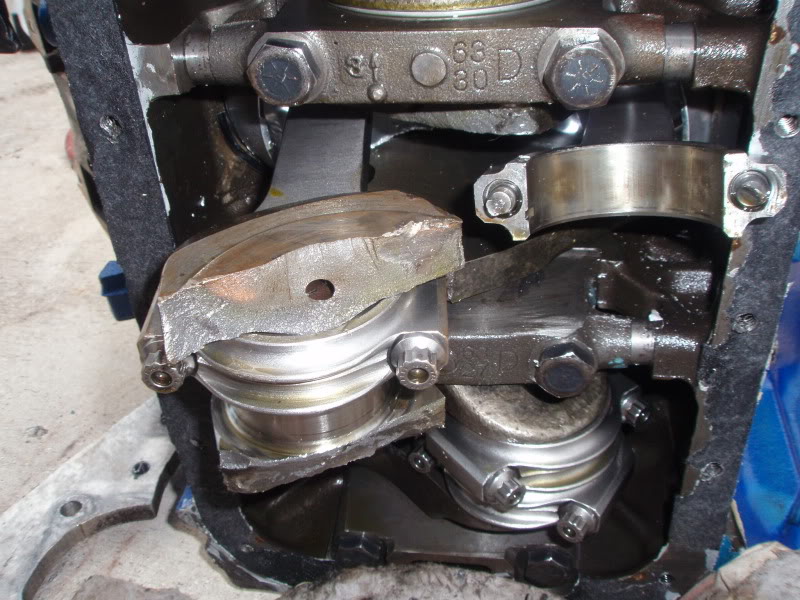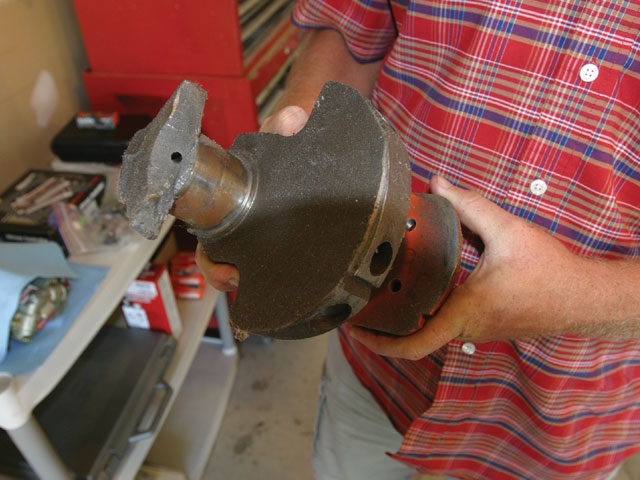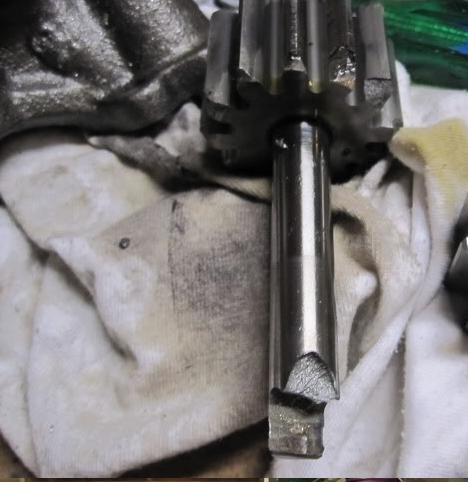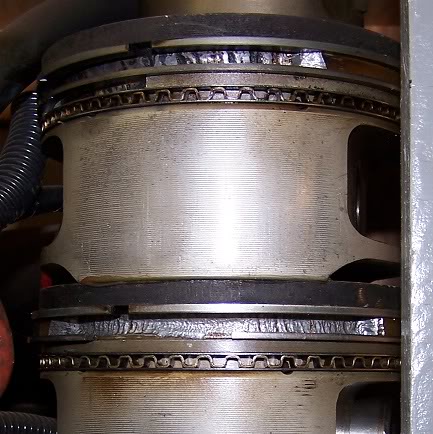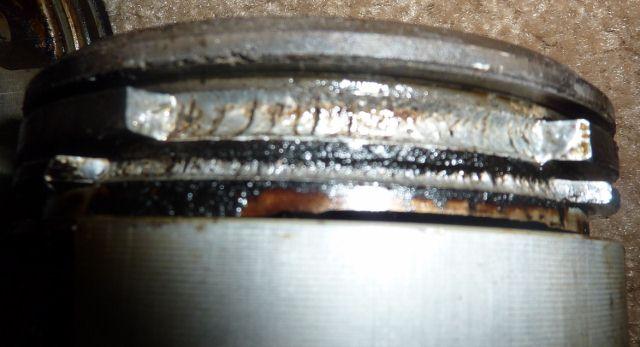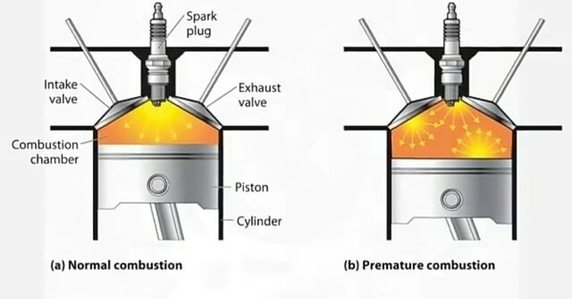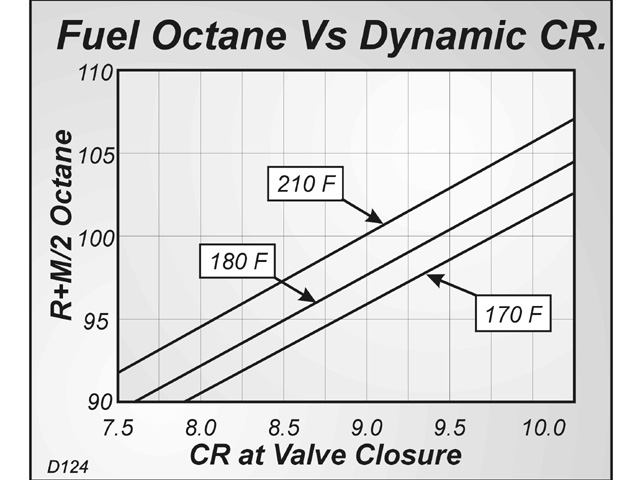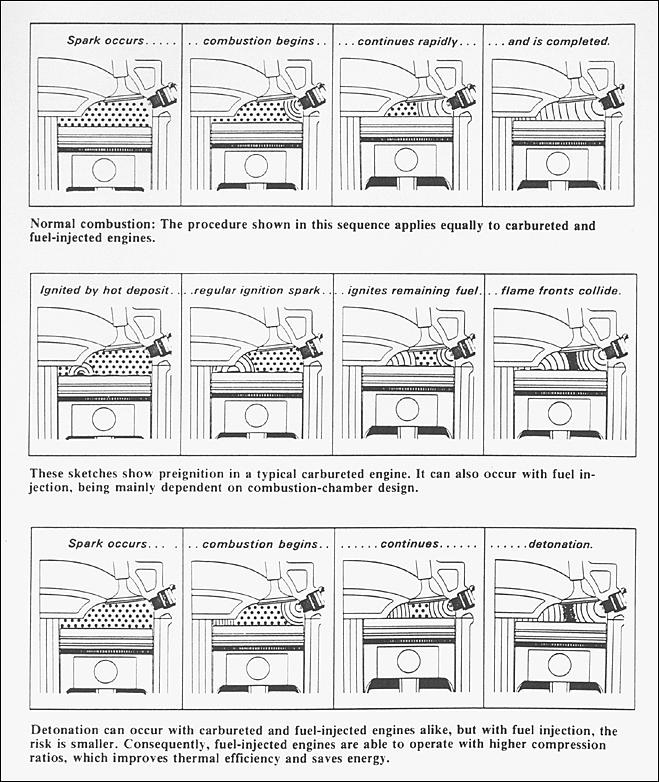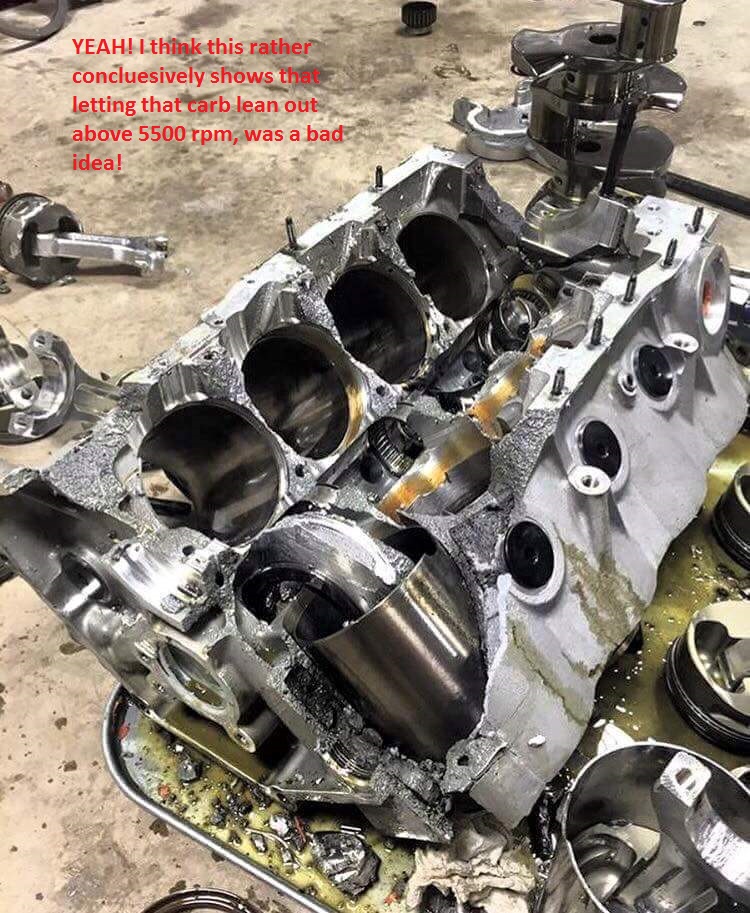Detonation - Causes and Effects
This article was taken from a series of postings on the Supra Club of New Zealand mailing list. The contributors were Stuart Woolford and Tony Bryant. The article was edited together by Cully Paterson.
Knock, detonation, pinging, pre-ignition, etc are basically two things:
1 - Compression ignition, usually from over-advance of ignition and/or excessive compression (e.g. having added a turbo to an NA engine without lowering the compression) - this only happens after ignition, and is where the last of the combustible mix ignites from over-pressure during the last of the burn, giving a sudden detonation. A little is OK, and keeps the cylinder clean

but causes larger stresses in an engine, this is what knock sensors monitor, as the detonation produces quite specific, and audible, noises.
2 - Pre-ignition/thermal ignition, this is often caused by too 'hot' spark plugs or hot-spots in the carbon crud that builds up in cylinders. It causes the combustible mix to start burning from a point/cause other than the spark plug ignition spark. This can be VERY bad if it happens very early in the compression stroke, where it can destroy an engine in one cycle! This is, fortunately, less common, however it can be caused by runaway compression ignition. This causes additional heat to build up and the can cause pre-ignition to start, and to then happen progressively earlier in the cycle (until BOOM!).
The causes of knock can be:
* Excessive compression - increases pressure / temperature
* Not enough octane rating - fuel more likely to explode
* Wrong mixture - excessive heating / lowering effective octane
* Ignition timing - too much advance increases peak cylinder pressures a LOT
* Poor cooling - leading to high cylinder temps and pre-ignition
* Dirty cylinders - more candidate points for pre-ignition
* ECU/sensor fault - lots of options
and no doubt more.
The most 'efficient' place for an engine to run if often just on the edge of knock (from compression ignition) - so many modern ECUs use a knock sensor to hold the engine just on the edge of knock, but preventing damage due to excessive knock.
'Lean knock' is sometimes not actually a lean mixture (in fact, very lean mixtures will misfire, not knock), but rather an insufficiently rich mixture, as rich mixtures will delay the burn and burn cooler, thus reducing the chances of knock. This is very typical of the behaviour of turbo engines under boost, where they are deliberately run very rich to prevent the onset of knock. This explains why turbo engines in perfect condition can often be seen producing black smoke under power. On the other hand, get the mixture too rich, and the temperatures start coming back up rapidly...
- Is knocking the same as pinging and detonation?
Yes, It all refers to the same phenomenon, which is the simultaneous burning of all/most of the fuel/air mix, due to the auto-ignition temperature of the unburnt mixture being exceeded.
We have a few possible heat sources.
1) Normal ignition. The normally controlled burning process obviously adds heat to the whole mixture.
2) The compression itself. In the same way a turbo heats its compressed air, the piston will heat the mixture at it compresses it.
3) Pre-ignition. Where a hot spot initiates ignition in addition to the spark plug, thus burning the mixture faster than usual.
When knock happens, its usually a combination of factors e.g. over-advanced timing combines the heating effects of 1 & 2, thus hitting the auto-ignition temperature, and wammo! the whole mixture goes up simultaneously, resulting in a "step" pressure rise, and general destruction eventually ensues.
- So are the ECUs quick enough to regulate the air/fuel ratio and keep knock under control? Surely at high RPM the rate of change is going to become fairly critical?
The effect at a higher rpm, is less noticeable because of 2 reasons:
1) The difference in injector duration between boot planted and not at all is less at higher RPMs. e.g. from my own map:
1.0 atm, 5000 RPM ~ 7.0 ms
1.0 atm, 1000 RPM ~ 7.0 ms
0.3 atm, 5000 RPM ~ 2.1 ms
0.3 atm, 1000 RPM ~ 1.2 ms
I.e. if you boot it at 1000 RPM you are momentarily providing 17% of the required fuel, vs. 30% at 5000 RPM. 17% is a lot more likely to ‘lean misfire’ than 30% is. Also higher turbulence at higher RPM will allow a leaner mixture to fire.
However it's not quite that bad, because the MAP (which is what controls %VE and hence injector duration) doesn't change THAT fast - the plenum takes some time (independent of RPM) to fill when you snap open the throttle. So you never end up with figures as bad as that just described, you just run a touch lean for a few cycles.
A software throttle pump is often touted as a way around that, but once again, the ECU has to react fast enough, so you're back to square one. The ECU must react at at least the same speed as the minimum plenum fill time. That’s why huge throttle plate(s) tend to exaggerate this effect.
As for the effect on the engine: pretty negligible. Lean engine damage is caused largely by heating effects (e.g. melting a piston), which is obviously a longish term effect, i.e. in the order of 10s of seconds. Lean induced knock however is a cycle by cycle effect, BUT I don't think its a concern because
a) The mixture is likely to be lean enough to be below peak temperatures.
b) You're off boost, and hence also will be well below peak temperatures.
An aside on knock:
Note that knock is a combustion temperature related phenomenon. Richening the mixture cools the combustion down via evaporation of the excess fuel. Leaning the mixture to well lean of 14.7:1 (= the perfect mixture) cools it down via the excess air having thermal inertia. Ignition of course effects the peak pressure, and hence temperature rise via compression. Knock is most likely to happen around the area of 14.7:1 where neither the fuel or air cooling effects occurs.
I believe you've got more fuel hanging around in suspension in the plenum and runners, due to the average amount of fuel being consumed (==duty cycle). This provides a certain amount of "reserve" fuel.
Conclusion, I think you're safe from bad transients.



